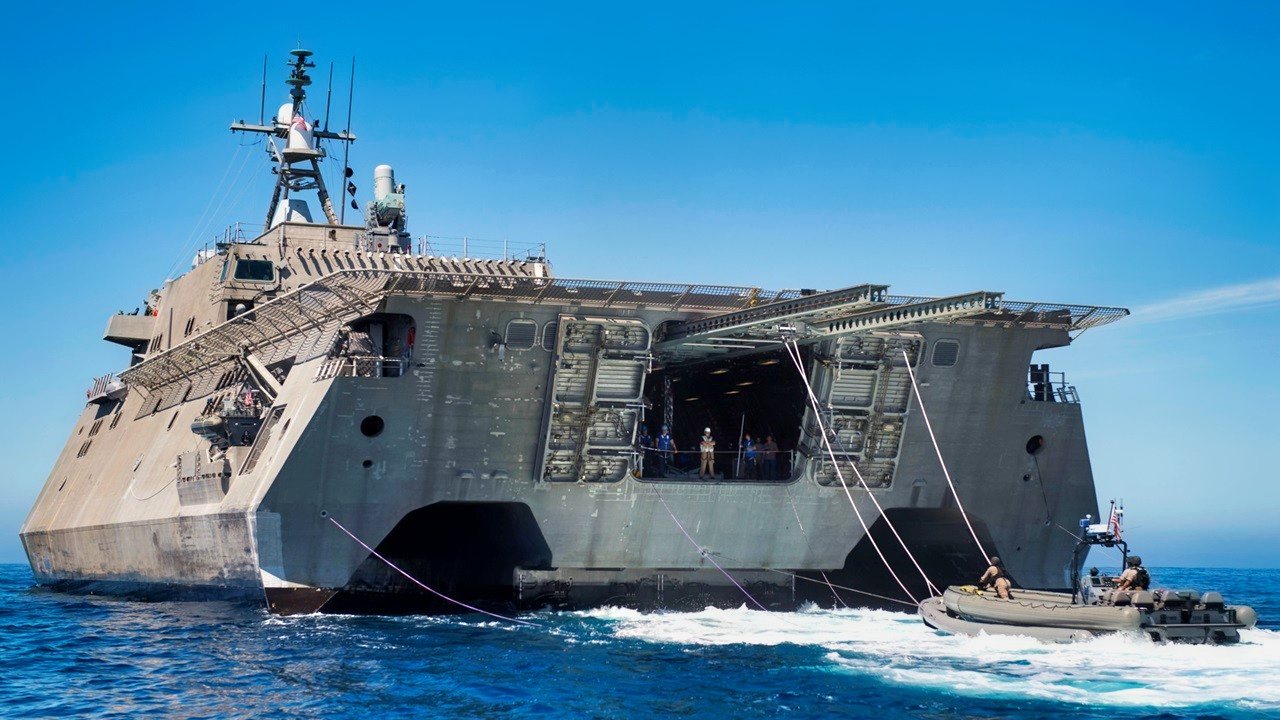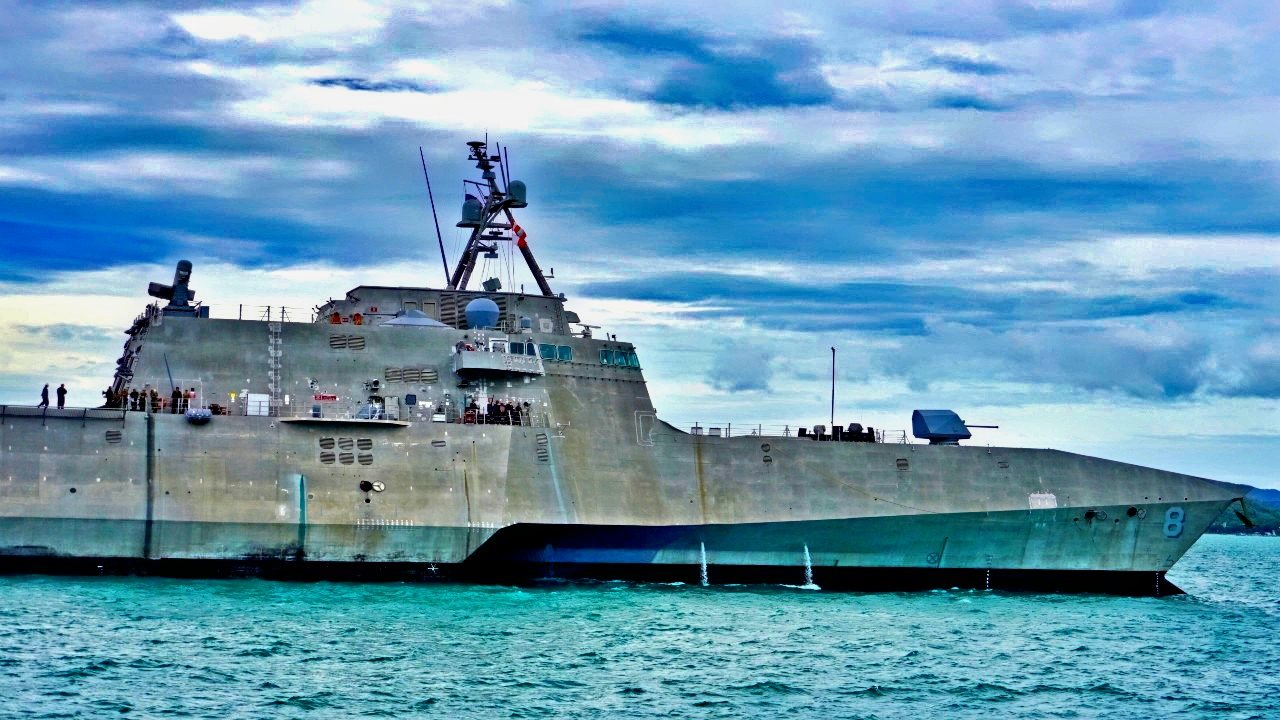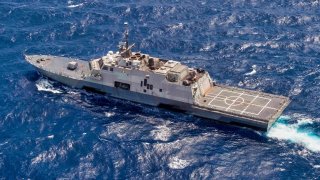5 Reasons the U.S. Navy's Littoral Combat Ships Were a Disaster
In July 2021, the United States Navy decommissioned the USS Independence - a Littoral Combat Ship - with little fanfare in a pier-side ceremony in San Diego. The ship was quite new.
In July 2021, the United States Navy decommissioned the USS Independence (LCS-2) with little fanfare in a pier-side ceremony in San Diego. The namesake of the U.S. Navy's Independence-class of Littoral Combat Ship (LCS) left the fleet after just 11 years in service, far shorter than the expected 25-year lifespan the Navy had envisioned for the fast-moving warships that were designed to operate close to shores.
What was unique about the LCS was that the Navy opted for two unique classes of vessels – each slightly smaller than the Oliver Hazard Perry-class frigate.
The first was the Freedom-class, which was designed by Lockheed Martin and built by Marinette Marine in Marinette, Wisconsin. It was the smaller of the two; a steel-hulled 387-foot warship that utilized a semi-planing monohull.
The second variant was the Independence-class, featuring a trimaran with a slender stabilized mono-hull that could allow flight operations for its helicopters in up to sea state five (rough) conditions. The 421-foot all-aluminum warship was designed and built by Austral USA in Mobile, AL.
Yet, instead of being vessels that could conduct a number of operations in littoral waters, the warships are arguably little more than great big "holes" in the water where taxpayer dollars are being thrown.
Here are the five reasons why these "Little Crappy Ships" should have been "deep-sixed" a long-time ago.
Littoral Combat Ships (LCS): We're Retiring Them Even as More Are Being Built
Last year, nine Freedom-class LCSs were marked for disposal as part of the Department of Defense's (DoD's) Fiscal Year 2023 budget proposal.
Yet, even as the oldest of these vessels are being retired well before the end of their expected service life, the U.S. Navy is still seeing new vessels added to the fleet. In September the USS Marinette (LCS-25) became the 13th Freedom-class Littoral Combat Ship (LCS) to enter service – yet it joined the fleet just a month after the decommissioning of the USS Sioux City (LCS-11) in Mayport, Florida.

Moreover, it was earlier this year that the Pentagon announced that defense primes Lockheed Martin and General Dynamics had each been awarded multi-million-dollar contracts to sustain the twin-variant Littoral Combat Ship (LCS) program. The combined value of the contracts was reported to be in excess of $129 million.
Both contracts are expected to be completed by next August, with the United States Naval Sea Systems command acting as the contracting authority. The U.S. Navy is now sustaining warships it actually doesn't even want in service. It is also notable that the Navy is now commissioning vessels like the USS Marinette as another LCS that is only five years old is being retired.
The Wrong Ships for the Job
The LCS program was one billed as the future of the fleet. The small and fast warships were seen as ideal for combating missile-firing boats, and even small submarines. At the same time, it was envisioned that the stealthy surface combatants could be capable of defeating anti-access and asymmetric threats in littoral or near-shore waters.
The LCS program began when the U.S. military was engaged in the Global War on Terror (GWOT) following the September 11, 2001 attacks. The LCS was seen as ideal for combating missile-firing boats, and even small submarines. Moreover, it was envisioned that the stealthy surface combatants could be capable of defeating anti-access and asymmetric threats in littoral or near-shore waters.
However, the LCS program's capabilities were vastly hindered after Congress cut the funding for the mission modules. As a result, critics of the LCS program have argued that the ships aren't suited to confronting near-peer adversaries, are unreliable, and still lack the modules that could make them more capable.
Yet, lawmakers have refused to allow the U.S. Navy to rid itself of more of the ships – and there are currently four Freedom-class variants and three Independence-class ships that are now under construction.
Littoral Combat Ships: Expensive to Maintain
A Government Accountability Office (GAO) report from April 2021 found that the U.S. Navy still has planned to spend $61 billion to maintain and operate its LCS fleet, as some of the earliest produced vessels entered the U.S. Navy's maintenance cycle, which has higher than expected costs.
Not Reliable Vessels
As previously reported, the vessels' performance has not lived up to expectations – not even close. A recent report released by the Office of the U.S. Director, Operational Test & Evaluation stated that the survivability of the LCS was "challenged in a contested environment against selected kinetic threat types," while survivability for missions in cyber-contested environments was "currently unknown."
In addition, there have been class-wide propulsion and hull crack issues that have plagued both the Freedom and Independence LCS classes. Moreover, transmission-related issues largely plague the Freedom-class, impacting the vessels' reliability.
Not Suited for a War With China
Simply put, while the LCS could – at least in theory – seem well-suited to operating in the shallow waters around the South China Sea, the truth is that the vessels aren't really up to the task of crossing the Pacific and operating independently in a major conflict.

Critics of the program have suggested that instead, the U.S. Navy would be better served by a new class of frigates, along with unmanned ships and aircraft. Such a mix of manned and unmanned platforms could do the jobs the Navy envisioned for the LCS, and do it more cost-effectively.
Author Experience and Expertise
Peter Suciu is a Michigan-based writer. He has contributed to more than four dozen magazines, newspapers, and websites with over 3,200 published pieces over a twenty-year career in journalism. He regularly writes about military hardware, firearms history, cybersecurity, politics, and international affairs. Peter is also a Contributing Writer for Forbes and Clearance Jobs. You can follow him on Twitter: @PeterSuciu.


